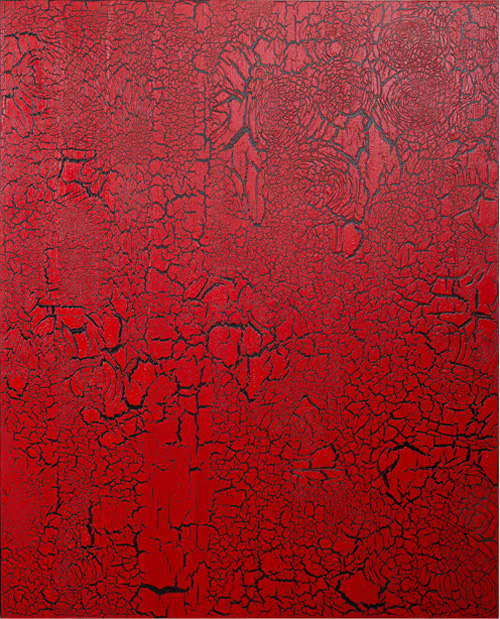
Ed Moses: The Crackle Paintings | Moses' six decade long career is distinguished by his continually evolving process; in The Crackle Paintings we see a further continuation of his process and aesthetic.
Moses began exhibiting at the legendary Ferus Gallery in Los Angeles, and since this initial part of his career he has become an iconic Los Angeles art figure. He has defined his career by dismissing the role of the artist and elevating the importance of the process of creating work through chance and experimentation. True to form, Moses resists the urge to over think or overwork these paintings. This tendency toward exploration is precisely what keeps Moses' career fresh and exciting. Moses has painted full-bodied, aggressive gestures into his work, which are inextricably tied to the result of the final paintings. His paintings are a seamless blend of intense physicality and paint.
The Crackle Paintings offer the viewer a juxtaposition of color, texture and depth. In Red Over Black, sporadic cracks and groves create a dynamic field of reds and blacks. While Moses perceives his color choices as more intuitive than calculated, there is a certain inherent energy in these paintings. These works demand attention from the viewer through their sheer size and electric color palette.
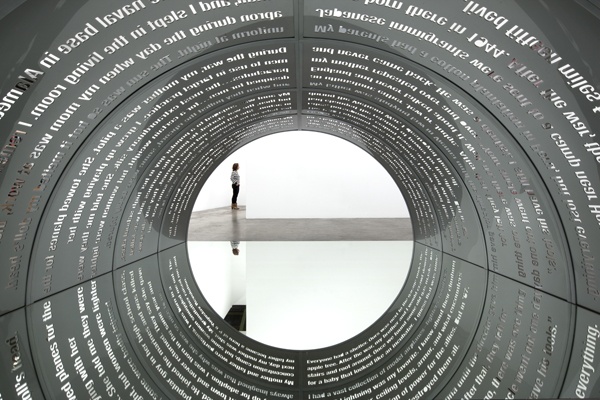
Mary Kelly | The artist's project-based work has addressed questions of sexuality, identity and memory for more than four decades. Kelly's large-scale narrative installations have blurred the boundaries between the personal and the political by visualizing the impact of historical events on the precarious nature of everyday life. Her new projects continue to mine the reservoir of collective memory and examine the claim it makes on the present.
Habitus, (2010-12) made in collaboration with Ray Barrie, recounts memories of the generation born during, or just after, World War II. The installation is comprised of two structures, one based on the Anderson Shelter, the other, on the Morrison Shelter. Both were mass-produced for home use during air raids in Britain, and the preoccupation with shelters persisted throughout the Cold War. Habitus merges the uncanny domesticity of the garden shed with the hallucinatory space of nuclear annihilation.
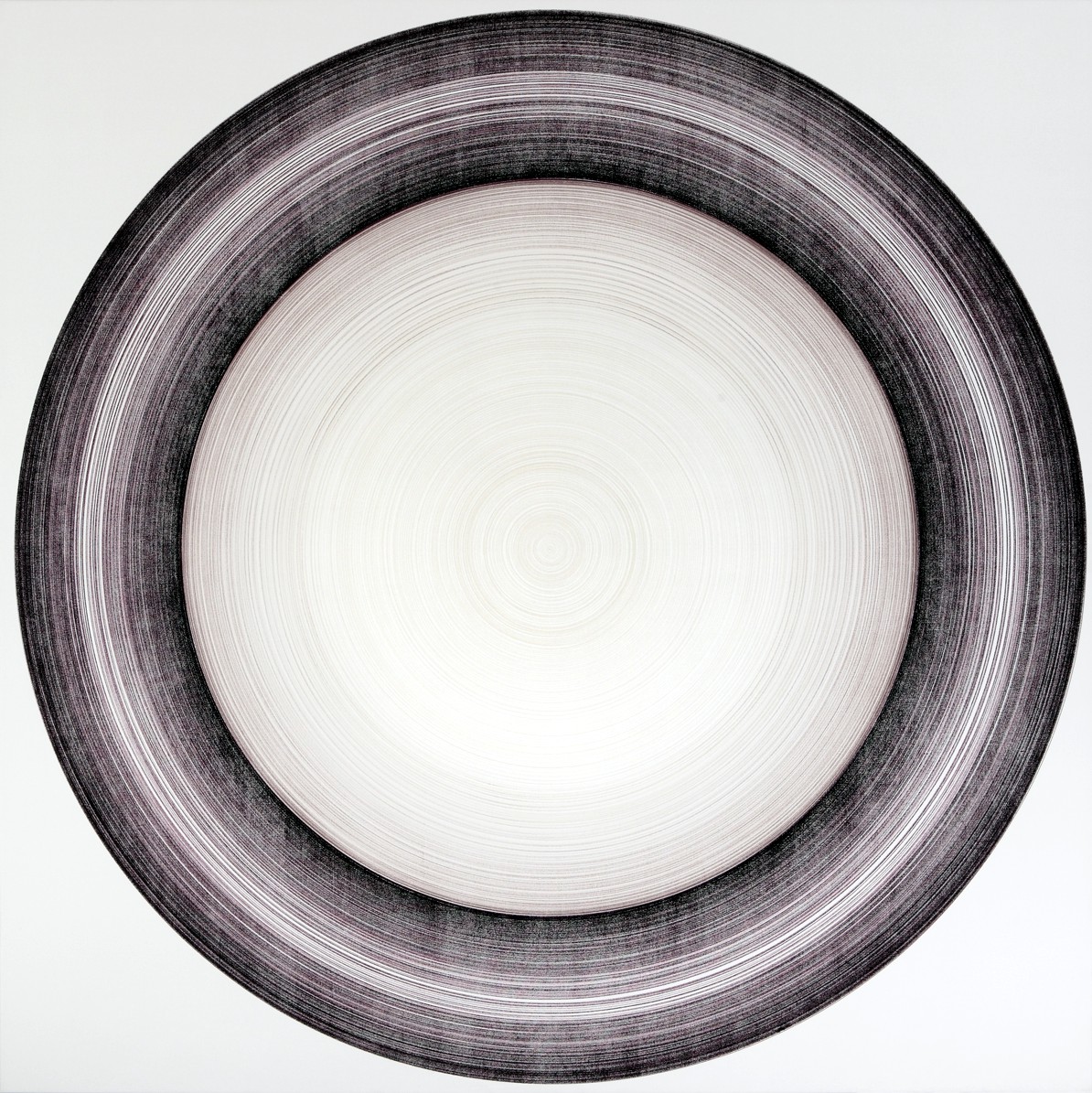
Miguel Osuna: SPIN 2 | Working in a wide range of materials from white pencil on canvas to ballpoint pen on recycled plastic, Osuna's aesthetic is one of precision, objectivity and expansiveness.
Divided into four interrelated bodies of work, described as Membranes, Orbitals, Blurs, and Centrifugations, each of these groupings explores the concept of motion on a molecular level as Osuna examines both velocity and gravity as an intimate and complicated visual experience. Among these four distinct categories movement is perceived and contained within the picture planes differently. For example, with the Orbital series, Osuna literally spins his canvas to achieve the circular forms that resemble targets or Hindu mandalas, expanding on the idea of the infinite as related to String Theory and quantum mechanics.
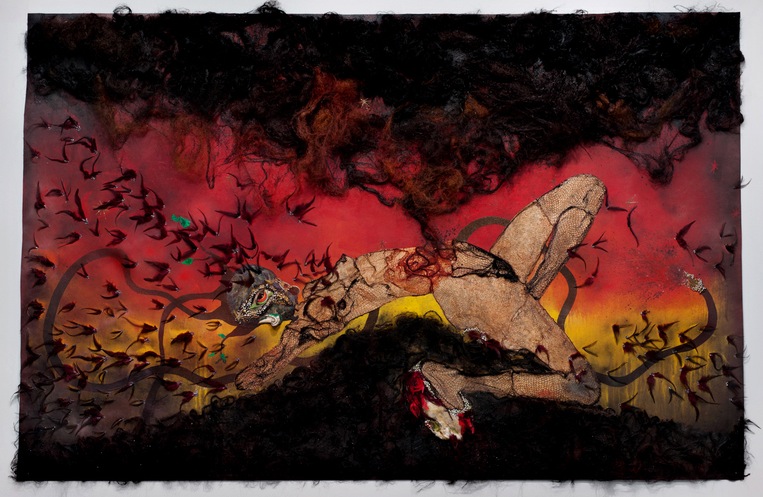
Wangechi Mutu | A solo exhibition of new work by Wangechi Mutu titled Nitarudi Ninarudi, Kiswahili for I plan to return I am returning includes a major video installation as well as new collages and sculptural works.
Mutu continues to address perceptions of conflicting cultural projections played out on the body through her contemplations on race and gender. Her hybrid beings, still fused and molded from plants, animals, machines, porn imagery and medical illustrations, are populating her collages in ever widening ranges of materials, but the tone of the work has shifted towards a deeper exploration and disclosure of the artist's own experience in the Diaspora.
In this exhibition, ideas around longing, memory, and exile resonate and subvert traditional notions of a singular place of origin. Fusing her Kenyan experience with inflections of other cultural influences, the work calls into question any notion of a static identity and firmly rejects the centralization and dominance of Eurocentric constructs within and outside of her homeland. Nitarudi Ninarudi expresses the complexity of longing for a place that is alive in the memory in a very different way than in the physical reality -- a place as evasive and fleeting as the identities one negotiates when they are relocated, bringing into play issues of transformation, translation, and even personal survival.
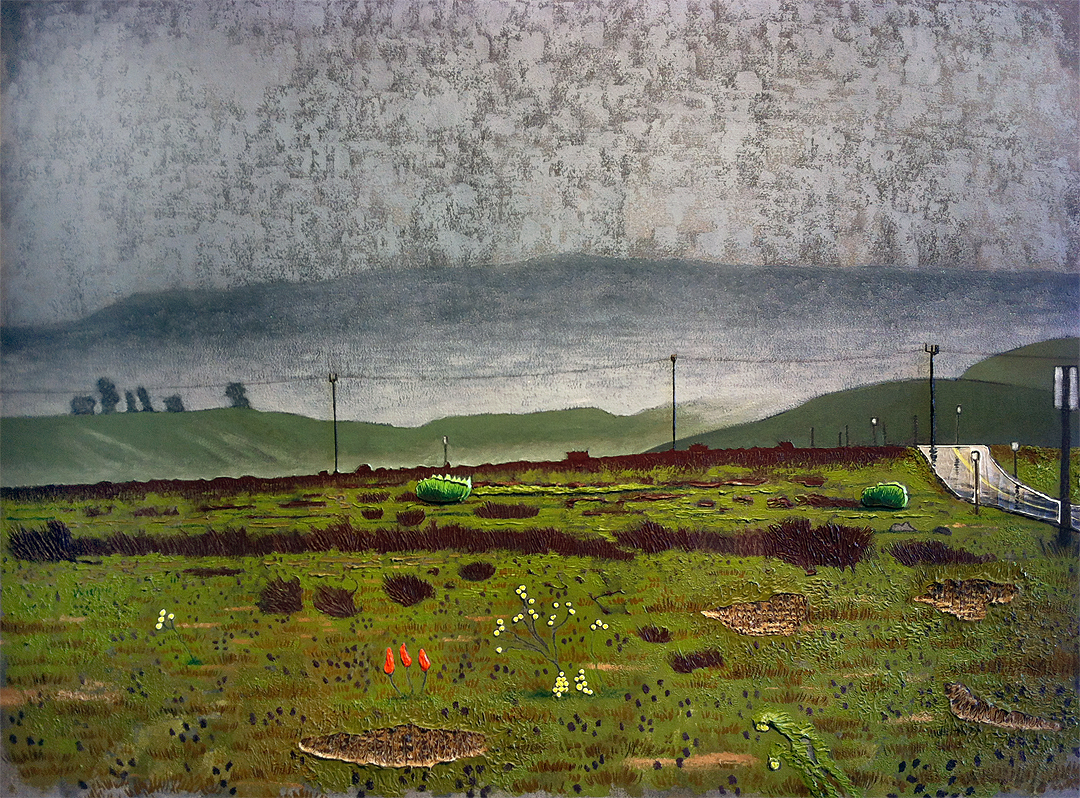
Cole Case: Flowers, Water and Other Places | Culled from two years of observing and drawing on site, the artist has created a body of work both eclectic and incisive. Intuitively traveling to locations throughout Southern California, Case has found the extraordinary in the familiar: cement river beds, high desert landscape, or sunflowers arranged in left over plastic water bottles. Beginning with small ballpoint pen and wash drawings, the artist uses his primary information (much as the Hudson River School artists) in his studio as notes to create a new vision of his experience. Different from the Impressionists and California Plein Air painters who made their paintings on site, Case uses iPhone and iPad app technology to isolate and match specific color elements.
For the most current and comprehensive calendar of art events in Los Angeles go to Artweek.LA.